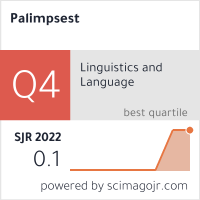DYSLEXIA & LANGUAGE TEACHING
DOI:
https://doi.org/10.46763/PALIM22714223kAbstract
Successful teaching is directly dependent on the teacher’s ability to recognize the needs and difficulties of students and teach them appropriately. Therefore, it is essential to be aware of the range of difficulties caused by dyslexia in the language learning process. Dyslexia as a learning difficulty is still largely unrecognized in Macedonia and it is scarcely referred to as part of the educational process at any level. Herein, in this paper, we review the most common problems of dyslexic students and suggest possible solutions through some of the most common methods used in language teaching and teaching in general.
Keywords: dyslexia; foreign language; mother tongue; fluency.


